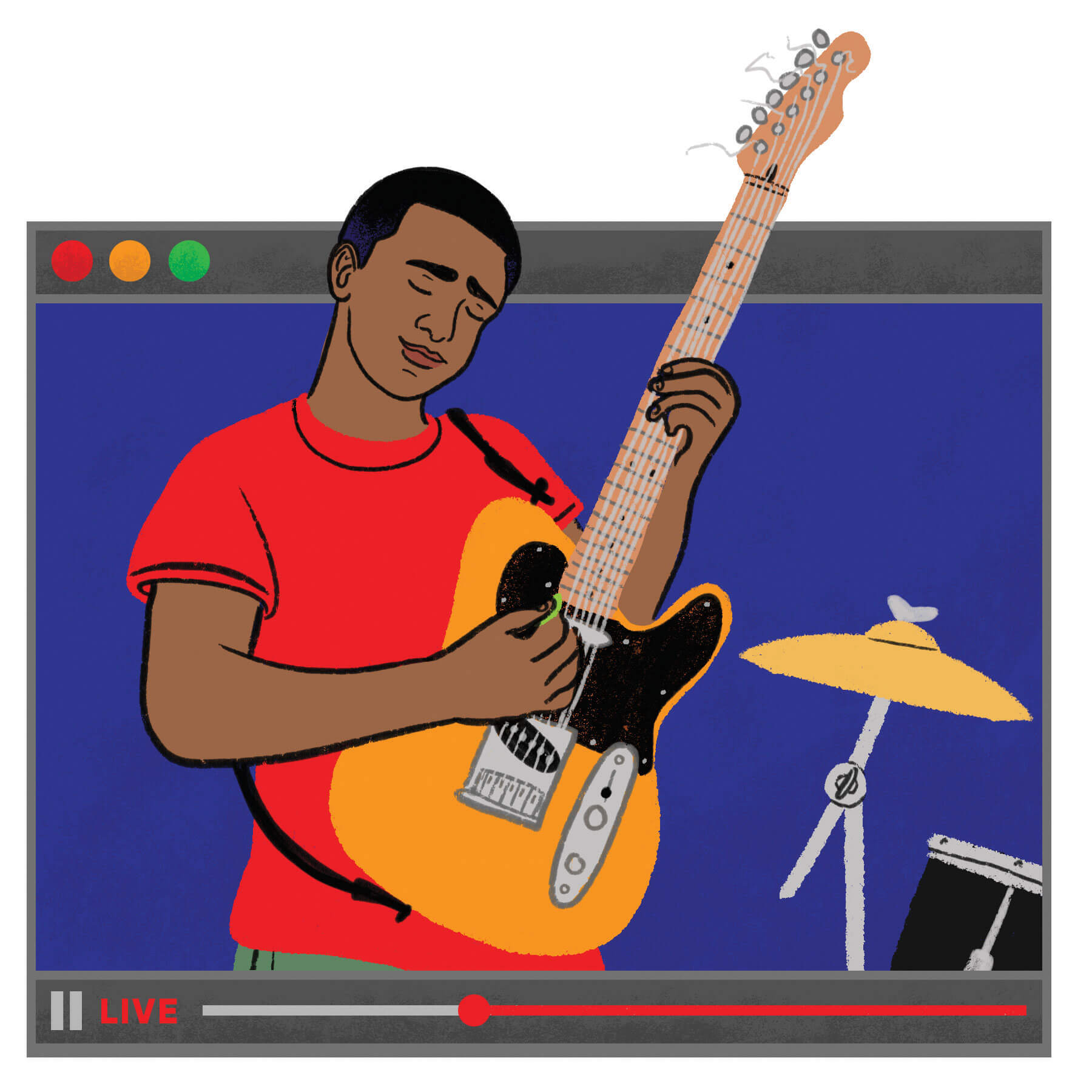
The Music Never Stops
By Joe Rapolla, chair of the Music and Theatre Arts Department and director of the Music Industry Program.
The music business has been disrupted many times, so the industry seems to be well groomed for change and innovation. Just over the last several decades, we’ve gone from a physical product—vinyl, eight-track tapes, cassettes, and CDs—to virtual products—such as MP3s and downloads—to, right now, where we’re essentially an all-streaming, non-ownership service-based model.
But live music has obviously been impacted. And live music, over the last couple of decades, has been one of the biggest revenue chunks within the overall music industry pie. It used to be that you put a live tour together to go to the individual markets to expose your music to different fans and get them excited about buying your records. Well, over the last couple of decades, people haven’t been buying the records anymore, they’ve been streaming them, turning the live part of the business into a bigger part of the pie.
So artists have had to really ramp up their use of online and social platforms to try to fill in some of the gap. They’re finding new, virtual ways to connect with and perform for fans to give them somewhat of a live experience. With the student record label, Blue Hawk Records, we had live, virtual song release events. And think of Travis Scott’s (April 2020) concert in Fortnite, where you saw an artist using AI to create an experience with fans that they would never have had before and have fans really interact with the whole concert experience in a video game. So the industry has been demonstrating that it is, at its core, a creative industry, and its creativity is helping it develop new ways for fans to connect with artists.
But the pandemic has changed the way we will experience live music. There will be more precautions, like the way we incorporated new travel procedures after 9/11. And there’ll probably be some new safety procedures incorporated into the live experience. But we’re coming back and we’re coming back sooner than we think. In fact, in the UK, there are large-scale concerts scheduled for this summer that sold out in 72 hours. There’s a pent-up appetite.
The return will be a little slower in the United States. Some of the venues are opening now at 10% to 50% capacity, and some of the big promoters like Live Nation are waiting, but they’re optimistic that 75% capacity shows are within sight. So I think there’s light at the end of the tunnel here.